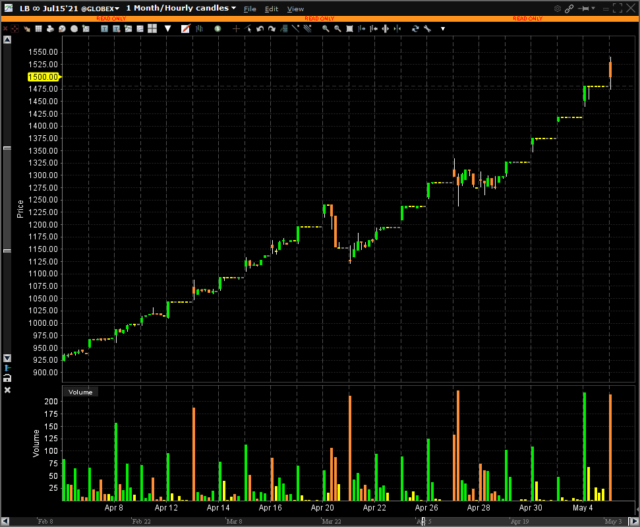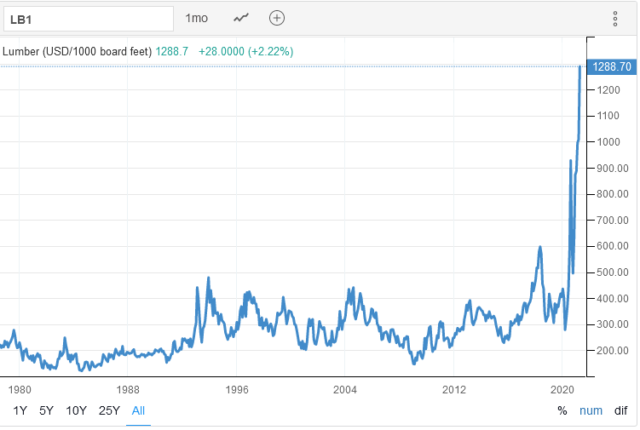There’s a great discussion on portfolio diversification between stusclues and Rod in the previous post. I’m appreciative of the time it takes to write these things and for the shared perspective and respect for differences. I was wondering if I was on the internet for a moment.
Going to the title of this post, I have always found the timing of my buying to be a lot better than my selling. The execution of my selling over the past decade or so has been mediocre, to the point where I’ve given it a bit of revision over the years. In general, my problem has been that I have been too eager to sell. I typically buy stocks that are considered to be ‘value’, and when the market realizes it, it tends to over-swing in the opposite direction and I’ve been trying to get a bit better at ‘playing the pendulum’. There have been failures and successes, but for example, in the case of Genworth MI, I probably bailed out a little too early and left some money that I probably shouldn’t have (especially those monstrous special dividends).
Still, one cannot be expected to claim every penny of upside, especially when looking at a stock in retrospect. It is nearly impossible to time the top, as well as being able to time the bottom. A lot of value is captured being directionally correct and not necessarily buying at the low. Also, a lot of value is captured in identifying when the basis for taking the position in the first place was wrong and taking an early small loss instead of a larger one. Finally, if an alternative position poses a better risk/reward, there may be value in diversifying the less attractive alternative – 2020 was rife with sales that today look stupid, but the transaction spreadsheet doesn’t show what was bought in substitution for those sales at that particular time (almost anything sold between March 2020 to May 2020 looked like a bad sale, unless if you take it in consideration with what was purchased at the same time).
Applying these general principles, I have recently decided to bail out my (very small) positions in Canfor (TSX: CFP) and Western Forest (TSX: WEF). These positions were tiny and taken during the Covid onslaught (there was just too much other stuff going on for me to pay more attention), but percentage-wise they were well above a 100% gain. I’ve redeployed the proceeds to companies that are exposed to crude oil prices.
The lumber commodity has been on a huge tear over the past month. The following is a chart of the July lumber futures, and note that the step-up is because on many days the future contract has been locked limit-up:

For contrast, this is the 40 year history of the commodity:

I could only imagine what it was like to be a short seller of the futures over the past month (noting that the 925 price level was already at all-time highs!).
Correspondingly, lumber companies have skyrocketed during Covid. This includes CFP, WEF, WFG, IFP.
I will talk more about Canfor. They are 51% owned by a Jimmy Pattison company (his company also controls Westshore (TSX: WTE)). They were notably in the news in 2019 (pre-Covid) when they tried to take over the 49% minority stake at CAD$16/share. This was a typical Jimmy masterstroke – if it actually passed! The vote failed to meet the passing threshold – barely. Notably, one of the directors, Barbara Hislop, who was a descendant of one of the original founders of Canfor (in addition to working her ranks up the company over a few decades herself), was against the deal. She was the sole director to ‘abstain’ from the board of directors’ vote to recommend selling out at $16/share. That ‘trade’ to not divest saved her many millions of dollars – going into 2021 she had 1.3 million shares of Canfor and has subsequently dumped nearly half of them for around $30 a piece. Talk about vindication.
It’s easy to look at this in retrospect, but even then, Canfor got as low as $6.11 during the pits of the Covid crisis. The trade to not sell out at $16 was looking bad for some time.
In the last quarter, Canfor reported a net income of $3.42/share. Annualized that’s $13.68/share, or about 2.4x earnings at the current trading price of $33. Needless to say, you are correct in questioning my mental sanity when I am selling equity at 2.4x annualized earnings. Didn’t I talk about selling out too early at the beginning of this post?
The reason for this is that lumber is very cyclical. There are boom and bust periods. Right now is the “category 5 hurricane” confluence of events that is triggering a massive demand-supply imbalance and we are in the second phase of that storm where the eye of the hurricane has passed and we are once again facing the winds. Putting a long story short, when Covid started, the assumption that wood executives made was to clear out inventory because the economy would crash and construction would come to a halt. Precisely the opposite happened (everybody decided it was a great time to start building your own deck) and we are seeing the reverberation of those March 2020 decisions today. Now we see 4’x8′ OSB plywood selling at $60/sheet at Home Depot and anything wood-based is insanely expensive.
Certain construction projects must be completed on a timeline – developers generally can’t say “forget it, I’ll wait until lumber gets cheaper to do this project” – there are running timelines that can’t be altered. Discretionary projects, however, will be delayed and this will create its own residual demand which will add to future prices – hence the January 2022 lumber futures are at around $1100. But there will be a point where the demand destruction will kick in, and lumber will hit some regression to the long-time average.
In the meantime, the surviving lumber companies will be repairing their balance sheets and prepare for a day with less profitability than present. Currently, they are pumping out lumber as quickly as they can make it.
In addition to Barbara Hislop selling out, I note that a week ago Brookfield Asset Management dumped a massive stake in West Fraser Timber. While I am not a “follow the leader” type investor, I generally do have respect for Brookfield’s investment decisions.
In terms of the market dynamics, my gut instinct says that now is a good time to cash out. Everything is rosy. It feels terrible to sell out at 2.4x and I am probably leaving 10-20% of upside, but I’m punching out the clock right now. If I had a larger position, I’d get a little more fancy and sell a chunk of it with every few percent of share appreciation (this indeed would capture more of the upside if it were to occur), but I just want this trade out of my mind to preserve my mental bandwidth for other things.



